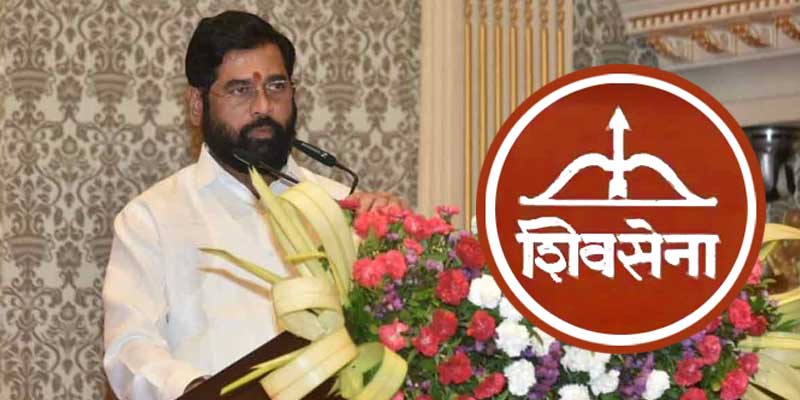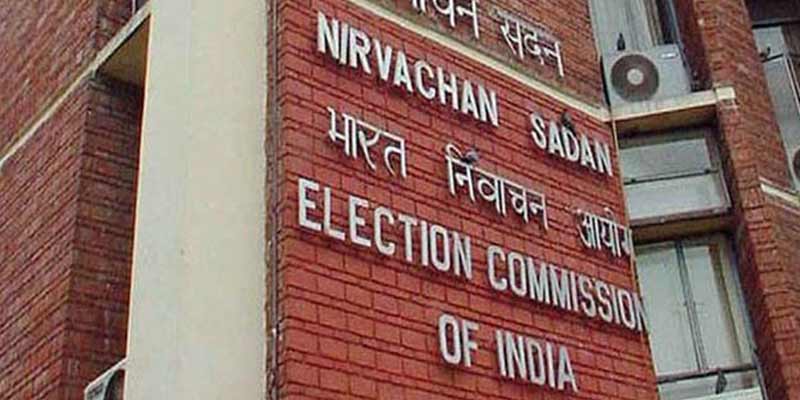- India
- Feb 20
How EC ruled in favour of Eknath Shinde in Shiv Sena dispute?
• The Election Commission recognised Maharashtra Chief Minister Eknath Shinde-led faction as the real Shiv Sena and ordered allocation of the ‘bow and arrow’ poll symbol to it, delivering a big blow to the rival camp led by former chief minister Uddhav Thackeray, whose father Bal Thackeray founded the outfit in 1966.
• For the bypoll, the two factions were allotted two different symbols — two swords and a shield for the Shinde faction, and flaming torch for the Uddhav faction.
• This is for the first time that the Thackeray family has lost control of the party that was founded in 1966. The party partnered with the BJP in 1984, an alliance that continued till 2019 when Uddhav Thackeray joined hands with arch-rivals NCP and Congress to become the chief minister.
• Shinde broke ranks with Thackeray in June 2022 and formed the government in alliance with the BJP, claiming support of 40 of the 55 Shiv Sena MLAs and 13 of the 18 Lok Sabha members.
• The Commission allowed the Thackeray faction to retain the name Shiv Sena (Uddhav Balasaheb Thackeray) and the flaming torch poll symbol, given to it in an interim order in October last year, till the conclusion of ongoing Assembly bypolls in the state.
How Election Commission decides on party symbol disputes?
• The EC is usually guided by Paragraph-15 of Symbols (Reservation and Allotment) Order, 1968 and the 1972 Supreme Court order in Sadiq Ali vs Election Commission.
• The Symbols Order has been issued by the Commission in exercise of the powers conferred by Article 324 of the Constitution read with Rule 5 and 10 of the Conduct of Election Rules.
Paragraph 15 deals with power of Commission in relation to splinter groups of rival sections of a recognised political party. It states that:
When the Commission is satisfied on information in its possession that there are rival sections or groups of a recognised political party each of whom claims to be that party, the Commission may, after taking into account all the available facts and circumstances of the case and hearing such representatives of the sections or groups and other persons as desire to be heard, decide that one such rival section or group or none of such rival sections or groups is that recognised political party and the decision of the Commission shall be binding on all such rival sections or groups.
Sadiq Ali and another vs Election Commission case
• In the year 1969, there was split within the Indian National Congress giving rise to two groups, one led by Indira Gandhi, under the presidentship of Jagjivan Ram and the other group led by S. Nijalingappa.
• After recording the evidence and hearing detailed submissions of both the groups, the Commission came to the conclusion that the group led by Jagjivan Ram enjoyed the majority support, both in the organisational and Legislature wings of the party, and, consequently, recognised that group as the Indian National Congress, by its order on January 11, 1971.
• The rival group led by Nijalingappa felt aggrieved by the Election Commission’s order and filed the present appeal before the Supreme Court.
• The Supreme Court held that the test of majority or numerical strength applied by the Commission for determining the dispute was a relevant and valuable test, and rightly applied by the Commission.
• The Supreme Court also held that paragraph 15 of the Symbols Order was not ultra vires the powers of the Election Commission under Article 324 of the Constitution. Further, the Court held that an election symbol is not property of the party concerned.
Decision of the EC in Shiv Sena dispute
• In a unanimous order on the six-month-old petition filed by Shinde, the three-member Commission said it had relied on the numerical strength of the party in the legislative wing, where the chief minister enjoyed the support of 40 of the 55 MLAs and 13 of the 18 Lok Sabha members.
• It gave a detailed reasoning on why it was forced to ignore the claims of the rival factions led by Shinde and Thackeray respectively over the organisational wing of the party, contending that the amendments to the Shiv Sena constitution in 2018, after the death of founder Balasaheb Thackeray, were undemocratic and paved the way to appoint people from a coterie as office bearers without any election at all.
• The Election Commission considered and applied three tests as envisaged in the Sadiq Ali case.
1) Test of Aims and Objects of the Party Constitution
• First, the Test of Aims and Objects of the Party Constitution was considered.
• Shinde asserted that Uddhav, who in the act of forming a coalition with parties of different ideology, has deviated from the “aims and objects” of the party, and the same formed the core point of disagreement, that is the genesis of the present dispute.
• It was seen that neither of the two factions had made any significant averments on the application of this test and thus, the same was found to be inapplicable in the circumstances of the case.
2) Test of Party Constitution
• The EC examined the 2018 constitution of the party in detail. The amended constitution of 2018 is not on record of EC.
• The EC found that the party constitution on which Uddhav was placing strong reliance is undemocratic.
• The amendments in the 2018 had undone the act of introducing democratic norms in the party constitution of 1999 and the functioning of Shiv Sena brought by Bal Thackeray at the insistence of the Commission.
• The paradox of India being the world’s largest democracy and its political field being occupied by some parties which are being treated as fiefdoms is disconcerting. For a truly functioning democracy, it is important that one of the key stakeholders — political parties — are run in a democratic manner and this in turn can be ensured only if the constitution being adopted by them does not allow concentration of power in the hands of a few.
• Therefore, any reliance on the “Test of Party Constitution” for determining the present dispute case will be undemocratic and catalytic in spreading such practices across parties.
• Thus, the Commission was forced to rely upon the “Test of Majority” in the legislative wing for adjudicating the present dispute.
3) Test of Majority
• The very basis of the recognition of a political party is in terms of percentage of votes it polled in elections to the Legislative Assembly and or to the House of People and number of elected members as per the provisions of the Symbols Act.
• The outcome of the majority test in the legislative wing clearly reflects qualitative superiority of the majority test in favour of Shinde.
• The 40 MLAs, supporting the Shinde faction, garnered 36,57,327 votes out of total 47,82,440 votes, which accounts for approximately 76 per cent of votes polled in favour of 55 winning MLAs.
• This was in contrast with 11,25,113 votes garnered by 15 MLAs whose support is claimed by the Thackeray faction.
• As against 90,49,789, the total votes polled by the Shiv Sena in Maharashtra Assembly election in 2019 (including the losing candidates), the votes polled by 40 MLAs supporting Shinde were approximately 40 per cent, while the votes polled by 15 MLAs supporting Thackeray were about 12 per cent.
• In the Lok Sabha elections, the 13 MPs supporting Shinde had polled 74,88,634 votes out of total 1,02,45,143 votes, which works out to nearly 73 per cent of votes polled in favour of the party’s total 18 members who won the 2019 parliamentary polls.
• This contrasts with 27,56,509 votes garnered by the five Lok Sabha members supporting the Thackeray faction, which account for 27 per cent of votes polled in favour of the 18 members.
• Through a conjoint and wholesome reading of all aspects, outcome of the tests and embedding the democratic imperative, there is a recognisable basis in the factual material of this dispute, to to discern the outcome of legislative wing test as the fulcrum.
Manorama Yearbook app is now available on Google Play Store and iOS App Store


